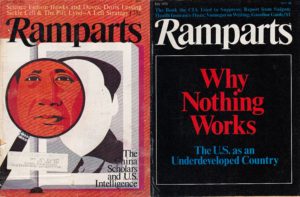Joan of Arc
In a new biography of the French girl freedom-fighter, it isn't the maid of Orleans who receives the blazing light of scrutiny so much as the society that engulfed her and the literary imagination in which she endures. Image by Doubleday
Image by Doubleday
Image by Doubleday
|
To see long excerpts from “Joan of Arc” at Google Books, click here. |
“Joan of Arc: A Life Transfigured” A book by Kathryn Harrison
Told and retold since time immemorial — by fabulists from Shakespeare to Bertolt Brecht — the story of Joan of Arc shows no sign of loosening its grip on our imaginations. “She was honorable in an age which had forgotten what honor was,” Mark Twain rhapsodized, “a rock of convictions in a time when men believed in nothing.” Five hundred years after her birth, the Maid of Orleans is a fixture in legend. In an era when women were chattel and courage was thought to be the sole dominion of men, she donned breeches and armor, rode at the head of an army and stiffened a nation’s resolve. In one scant year — from 1429 to 1430 — she drove back the English, checked an invasion and ushered a French monarch to his throne.
Nothing had prepared this child of 16 to handle a warhorse, much less lead captains, commune with angels and counsel kings. Driven by voices and galvanized by her faith, she made men brave and was burned at the stake for it. This is the stuff of epic narratives. In the Library of Congress alone, there are 1,438 books on the fearless Saint Joan.
Now comes Kathryn Harrison to bring her alive for a new era. One might wonder what attracts a memoirist and veteran novelist to such well-threshed history. Harrison is best known for her polarizing memoir “The Kiss,” in which she described an incestuous affair with her father. She has authored eight elegantly crafted and disparate novels, among them “Thicker Than Water” and “Envy”; a spate of autobiographical works, including “The Road to Santiago” and “Seeking Rapture”; and a psychobiography of Saint Therese of Lisieux.
What do these books have in common? They are largely about women driven by forces beyond their control.
Harrison is a writer in impressive command of her craft, but she is also a thinker with a penchant for analysis, an intense interest in the sexual, an ability to see past superficial characteristics to an animating force. In “Joan of Arc,” it isn’t Joan who receives the blazing light of Harrison’s scrutiny so much as the society that engulfed her and the literary imagination in which she endures.
All the same, the story itself is captivating: Harrison tells of a nation laid waste by a century of hardship and a punishing invasion; of the 13-year-old who heard voices and understood that she had been born to save France; of the journey she initiated at 16, seeking to convince hardened soldiers that she could lead them in battle and make a cowed dauphin a king.
It was apparent to no one that she was equipped to turn visions into reality. Joan’s father misread the dream he had about his daughter traveling with soldiers, taking it to mean she would be a whore among men. Months later, she mounted her steed and enlisted the French army in her cause. It was a miraculous transformation — in her, as well as an entire nation — and, as miracles are wont to do, it invited believers and skeptics. “One day she was a shepherdess,” Harrison writes, “the next a knight on a charger. God’s finger had brushed the earth, and no one, no matter his faith or lack thereof, could turn away from the spectacle. Some would say she was a witch, of course, and the finger of Satan’s.” And although she would terrify the English with the threat of her superhuman abilities, she would take a beleaguered French nation — ruined by plague, famine and a fear of God’s anger — and give it a reason to prevail.
Joan was by no means a perfect heroine. For all her abilities to lead men and to speak with the confidence and wisdom of someone far beyond her age and station, she was too easily swayed by luxury along the way. She longed for a dazzling suit of armor the way a bride might a wedding dress. Perhaps too imperiously, she announced herself as France’s “chef de guerre” and appalled the nobles.
There was, too, the glory of battle, the inexplicable phenomenon of men emasculated by a virginal presence. And then there was her capture by the English, her accusation as a witch, her incarceration in a cage and, eventually, a dank cell, where she lay fettered by leg irons, forced to shuffle “like a hobbled dog on a chain.”The history is extraordinary enough. But before long a reader suspects there is more than history here. The source notes are incomplete. Whole chunks of information go by without attribution. We are told to imagine action happening, for instance, on what “was almost certainly a fine day, bright and clear” with a sun shining “through the great rose window, spraying coins of colored light over the hushed congregants,” although there is nothing to confirm it. Quotes go by entirely undocumented. Indeed, Harrison blends truth and myth as if they were equal parts of the narrative. Dialogue and scenes imagined by George Bernard Shaw, Vita Sackville-West, Anatole France and even Cecil DeMille crop up to bolster the drama. “Joan of Arc” is cataloged as history and biography, but it is actually “a collective dream,” as the author confesses early on: a work whose “provenance is the unconscious; its logic apart from reason” — an echo chamber of 500 years of lore.
Present throughout in this telling — in the myth that sprang up in the Middle Ages, grew through the Age of Discovery and flourished in the Machine Age — is the obsession with Joan’s sexuality. Although there is every reason to believe that Joan died a virgin, that she never wavered from the chastity to which she was sworn, the symbols that bedeck Harrison’s story are frankly carnal. We are told about the phallic arrow, the phallic blade, the phallic hilt, the phallic key. She dwells on the manly dress that Joan favored and so offended the church — the trousers that “directed attention to her veiled genitalia and held it there.” There is, too, the violation of her shorn hair. None of Harrison’s sexual emphasis here is surprising, given her preoccupation with the subject in every book she has written. But it may say more about the author than about Joan herself.
It is impossible for Harrison to write an uninteresting book. She is too skilled a prose writer, too good a storyteller, too alert to passions and the human heart to produce a work that ever flags. But read “Joan of Arc” for what it tells you about the world in which the subject lived and the half-millennium of culture that has continued to mythologize her. In this striking volume, it is clear that Joan fell victim to more than an era’s intolerance. She became a victim to other dreamers’ dreams.
Marie Arana is the former editor in chief of The Washington Post’s Book World. Her books include “American Chica,” “The Writing Life” and “Bolivar: American Liberator.”
©2014, Washington Post Book World Service/Washington Post Writers Group
Your support matters…Independent journalism is under threat and overshadowed by heavily funded mainstream media.
You can help level the playing field. Become a member.
Your tax-deductible contribution keeps us digging beneath the headlines to give you thought-provoking, investigative reporting and analysis that unearths what's really happening- without compromise.
Give today to support our courageous, independent journalists.








You need to be a supporter to comment.
There are currently no responses to this article.
Be the first to respond.